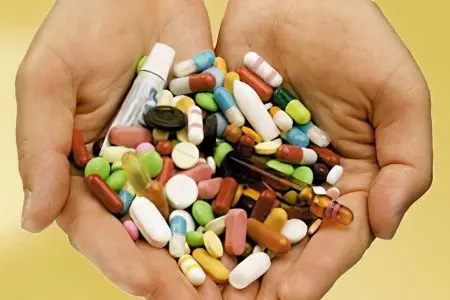Contents

Fever, increased headache, severe nasal congestion, feverish chills, and weakness are obvious signs of a cold or flu. Their “season” is the cold season, they are evidence of the human body’s vulnerability to acute respiratory viral infections and the influenza virus. As a rule, the signs become apparent when it is difficult to resort to preventive measures. Is the disease in full swing? There are two ways to help cope with this trouble – visit a doctor or go to a pharmacy. Also, the patient has the right to buy medicine for colds and flu according to the recommendations of a medical specialist or choose pills on his own. It is not easy to understand the wide range of medicines and pills presented on pharmacy display cases in the “flu and cold remedies” section. To do this, you must first type the certificate and choose what seems more suitable.
Pay attention! As a rule, the treatment of viral diseases and colds is usually limited to the use of the most advertised drugs. The easiest way to recover from an illness and return the rhythm of everyday work is to take medication. How correct is this approach? It is believed that everyone has a certain resource of strength and immunity, which disappears at a certain time. Even taking into account the widest range of medications available, you should not stop only at over-the-counter drugs – you should definitely contact a specialist. This is true not only in case of illness, but also in cases where prevention of the disease is necessary.
How to treat colds and flu?
Currently, there is no shortage in the spectrum of drugs that help with colds and viral diseases. They are classified according to some common features.
1. Group No. 1 – drugs for symptomatic treatment. Drugs in this category cope only with the symptoms of the disease: high body temperature, muscle pain, cough, nasal congestion, headache, feeling of lethargy, loss of strength.
It is important to know which cold and flu preparations in this category are especially popular:
Painkillers and antipyretics. They have a moderate analgesic effect and eliminate muscle and joint pain. Paracetamol and some other medicines, in which it is included, turned out to be in this category.
Antihistamines. They are taken to reduce swelling of the mucous membranes, eliminate inflammatory foci, lacrimation and itching. Often, with a cold, doctors opt for antihistamines such as Promethazine, Pheniramine, and Chlorphenamine.
Vasoconstrictors. Their task is to relieve nasal congestion, swelling of the mucous membranes of the respiratory tract and nasal cavity. Phenylephrine is especially popular in this category.
The remedies cited as an example do not eliminate the causative agent of the disease, but successfully alleviate the painful symptoms. The recommended course of admission is 3-5 days.
2. Group No. 2 – drugs that affect the immune system and the virus. Drugs in this category are prescribed only if it is precisely established that the cause of the disease is a virus, which is the simplest form of life, an RNA or DNA molecule with a special protein shell. Antiviral and immunomodulatory drugs act as a way to destroy and preserve the cell itself, blocking the development of the pathogen.
Antiviral drugs are classified according to the mechanism of action, creating the following groups:
Neuraminidase inhibitors (Zanamivir, Oseltamivir). These are the most effective medicines for influenza. They prevent the spread of the virus in the body, fight the symptoms of the disease, and also significantly reduce the risk of complications.
M2 viral protein blockers (Amantadine, Rimantadine). They can be thought of as another category of type A antiviral drugs. They are rarely prescribed because they have many side effects.
Interferon inductors (Arbidol, Amiksin, Groprinosin, Cycloferon). These drugs are based on interferon and have the ability to combine well with other antiviral drugs by enhancing their action. They are a stimulus for the production in the human body of a certain type of protein that contributes to the suppression of an infectious agent. Also, interferon inducers are an effective preventive measure in influenza epidemics.
What medicines are taken for the flu?

Influenza is an acute respiratory disease. Its basis is the causative agent-virus. The duration of the incubation period during which the disease develops is 2-5 days. At the end of this time period, the corresponding symptoms become apparent:
Prostration.
Intolerable cough.
Heat.
Constant feeling of tiredness, weakness.
Headache.
Influenza treatment is based on drug therapy. It is very important to adhere to bed rest, it is imperative to give up alcohol and smoking, increase the amount of drinking and take vitamins.
The habit of Russians to delay the treatment of influenza and get sick “on their feet” leads to complications. About 40% of those who get the flu are at risk of getting bronchitis, pneumonia, sinusitis, less often pyelonephritis, stomatitis and other diseases. Therefore, the appearance of chills, runny nose and other symptoms that resemble the flu should be a signal for the sick person to start treatment.
Tamiflu. This drug is based on oseltamivir. It is prescribed for the need for the prevention and treatment of influenza in patients of different age categories.
Grippferon. It is an effective remedy for diseases such as SARS and influenza. The main active ingredient in its composition is Interferon alfa-2b. It is allowed to be taken with a tendency to allergic reactions and individual intolerance to the components of the drug.
Relenza. The basic active ingredient of this drug is Zanamivir. Helps cure infection due to influenza type A or B.
Amixin. The composition of this drug includes Tiloron. The drug is recommended if it is necessary to treat viral hepatitis A, B and C, as well as cytomegalovirus and urogenital infections, SARS and influenza.
Kagocel. This is a medicine that effectively treats and allows for the prevention of herpes, SARS and influenza. Suitable for adult and pediatric patients.
Arbidol. The drug is an effective medicine in the treatment of diseases such as influenza A and B, its subtypes H1N1, H2N2, H3N2 and H5N1. In addition to this, it rids the body of some other ARVI pathogens (coronavirus, adenovirus, etc.).
Treatment of colds in pregnant women and children

Nuances in the treatment of diseases with various medications are considered to be a number of facts, not excluding childhood, pregnancy, lactation. Most often, they are on the list of contraindications for many contraindications regarding the intake of certain drugs. In this case, it is necessary to take a number of measures to still defeat diseases like influenza, SARS and colds in pregnant women and children. The first thing to do is to visit a doctor for a consultation. If the cold is insignificant, it is possible not to resort to drugs, opting for traditional medicine recipes. But in the case when the disease is caused by SARS or influenza caused by a virus, one should not take risks. It is best to build treatment on safe antiviral drugs (Arbidol, Groprinosin).
If the patient is in the pediatric age category, or is pregnant, medicines based on Paracetamol will help normalize body temperature. Cough is treated by Gedelix and Dr. Mom, and nasal congestion will disappear after using Pinosol.
We suggest relying on those funds that are included in the list of popular pills for the corresponding diseases, having previously read their instructions. The list is compiled with the condition that the reader can easily find out about the features of the medicines presented in it.
List of cold medicines
Anaferon
Arbidol
Baralgetas
Grammy
Kagocel
Remantadine
Rinza
Rinicold
Sinupret
In addition, pay attention to articles that reveal the pros and cons of all antiviral agents:
Pros and cons of basic antivirals (for adults)
Antivirals for children (tables by age)









